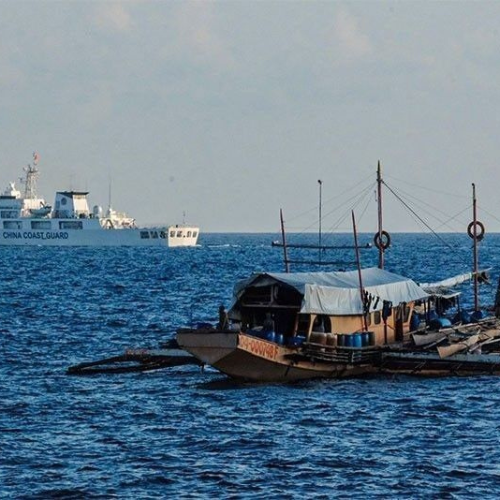The Philippines’ defense chief has raised serious concerns about China’s tactics in the South China Sea, accusing Beijing of using fishing boats disguised as military vessels to block access to important areas. This latest move is seen as part of China’s ongoing efforts to control disputed waters in the region. The Philippines has long been in a territorial dispute with China over these waters, which are vital for fishing and oil exploration. The defense chief’s comments were made during a visit to Palawan, a region of the Philippines located near the contested waters, alongside a U.S. counterpart.
Disguised Military Vessels: Fishing Boats as Tools of Control
Gilberto Teodoro, the Secretary of Defense for the Philippines, has accused China of sending military ships disguised as fishing boats to prevent the Philippines from accessing its exclusive economic zone (EEZ) in the South China Sea. The EEZ refers to areas where a country has the right to explore and use marine resources. The Philippines refers to the waters west of the country as the “West Philippine Sea,” and they claim parts of the sea as their own, but China also claims most of it as its territory.
During a briefing, Teodoro said that these disguised ships, which are often seen as fishing boats, are actually military vessels, including coast guard ships and maritime militia boats. According to him, this tactic is more than just a physical presence; it is part of a broader strategy to make it difficult for the Philippines to operate freely in these waters. He called China’s actions “dangerous” and “escalatory,” meaning they are causing rising tensions in the area. Teodoro’s comments were made in November 2024 during a trip to Palawan with Lloyd Austin, the U.S. Secretary of Defense, where both officials condemned China’s aggressive behavior.
The Role of Fishing Boats in China’s Grey-Zone Strategy
The issue of Chinese vessels in the South China Sea is not new. In fact, the Armed Forces of the Philippines reported a record-high 251 Chinese ships in the West Philippine Sea in September 2024. This includes a mix of military warships, coast guard vessels, and other boats from China’s maritime militia. The sheer number of ships and their aggressive presence has made it difficult for the Philippines to carry out normal activities in the area. But now, the Philippines’ defense chief is warning that the presence of these disguised fishing boats signals a new phase in China’s strategy. These vessels, although disguised as civilian fishing boats, are actually operating with military purposes in mind.
The use of fishing boats by China in the South China Sea is part of a broader strategy known as “grey-zone” tactics. Grey-zone tactics refer to actions that fall in between normal diplomacy and full-scale war. These tactics are designed to assert control over disputed areas without crossing the line into outright military conflict. By using civilian-looking vessels, China can avoid international condemnation that would come with using military ships. This strategy allows China to assert its dominance while keeping the situation ambiguous, making it harder for other countries, like the Philippines, to respond.
Philippines President’s Bold Move Defies China in Disputed South China Sea
The Risk of Espionage and Military Infiltration via Fishing Boats
The concerns about China’s military disguised as fishing boats go beyond just territorial disputes. Some lawmakers in the Philippines are also worried that China may be using these boats to gather intelligence or even conduct espionage. There have been fears that China could send undercover military officers disguised as workers in Philippine offshore gaming operations, which are set to be banned soon. These operations are seen as a potential cover for intelligence gathering. Such activities would be a serious security concern for the Philippines and raise further questions about China’s intentions in the region.
One of the primary challenges the Philippines faces is dealing with China’s Coast Guard (CCG), which operates not like a typical coast guard but as a heavily armed force capable of using military-grade tactics. The CCG’s presence in the region has been a point of contention for the Philippines and other countries in Southeast Asia, as it has been able to operate aggressively while keeping its actions within a grey zone. These actions can include blocking or harassing vessels from other countries, sometimes in a way that avoids direct military conflict but still achieves China’s objectives.
The Philippines and its allies, including the United States, have continued to push back against China’s tactics, seeking to expose the deceptive nature of these operations. As the situation in the South China Sea continues to evolve, it remains clear that the Philippines is facing an increasingly complex challenge in dealing with Chinese presence in these waters.


